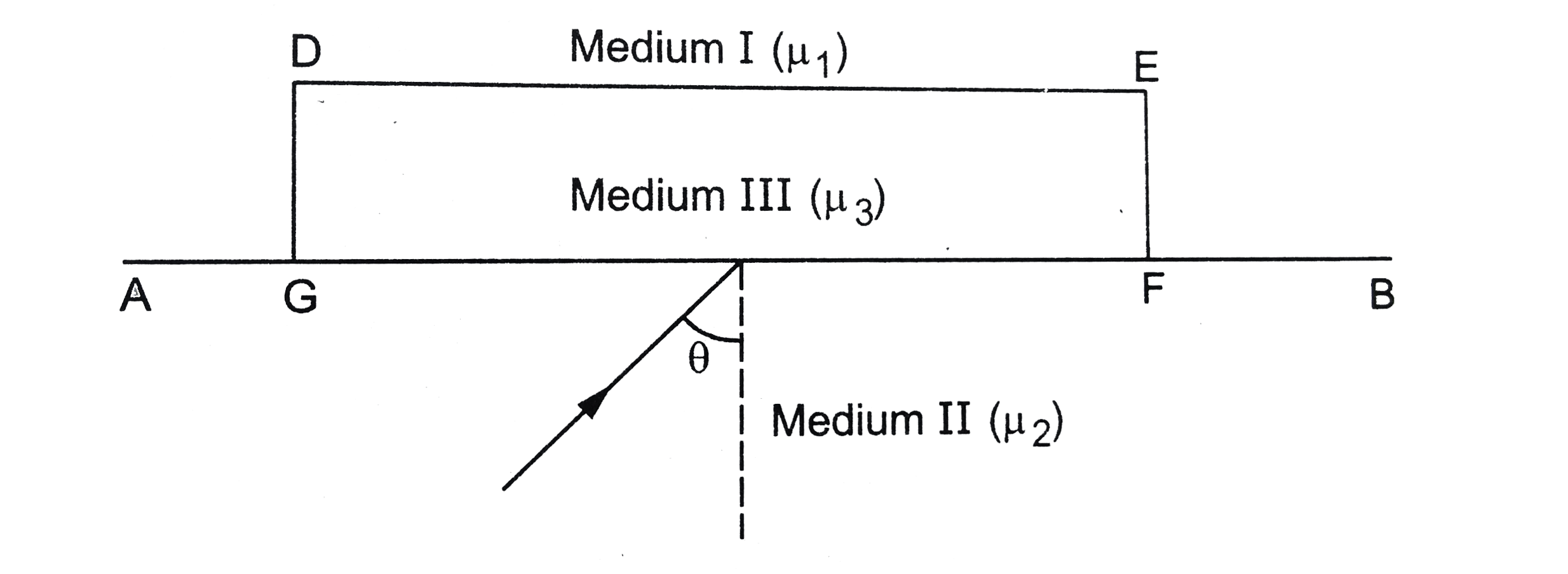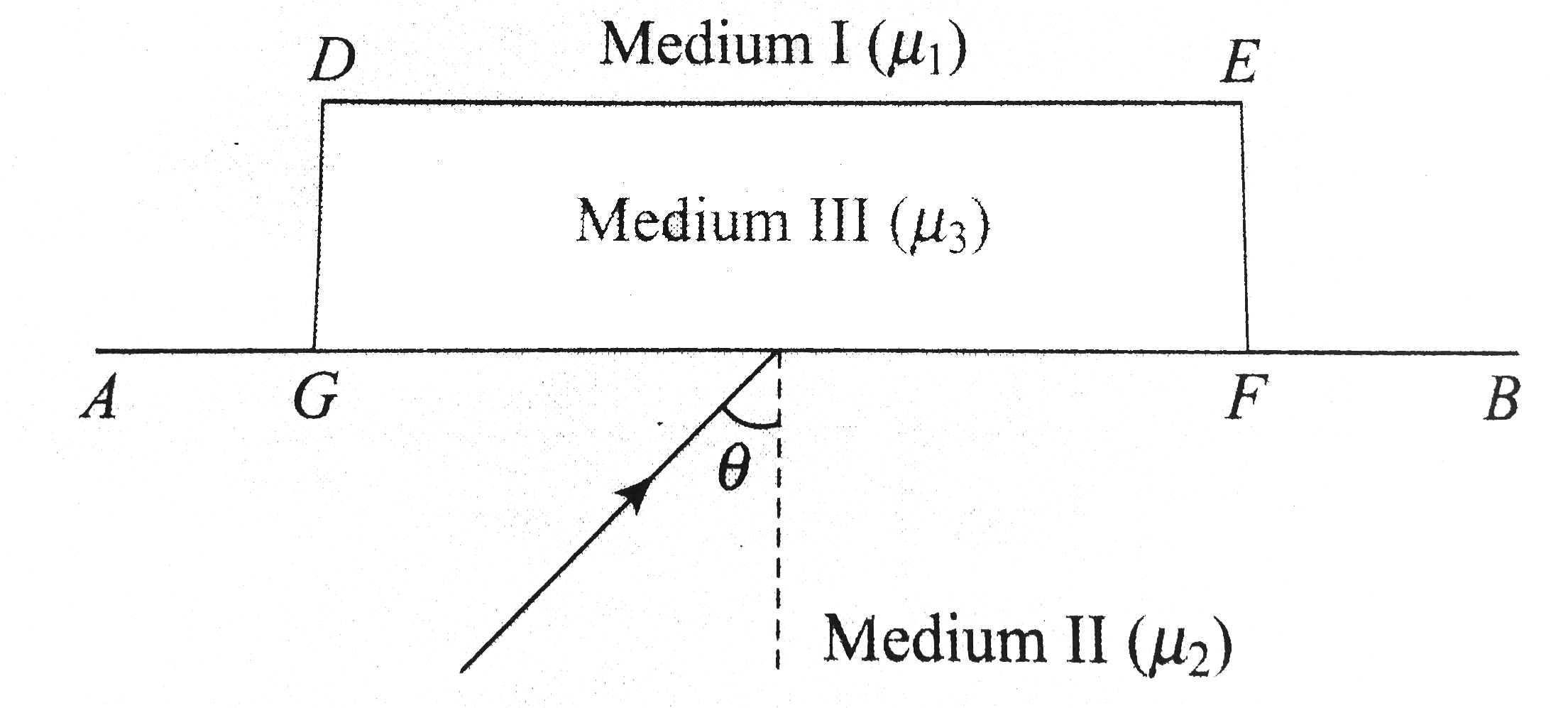State the condition of total internal reflectoin to take place at an interface separating two transparent media. Hence derive the expression for the critical angle in terms of speed of light in two media.Solution in Punjabi
Step by step video & image solution for State the condition of total internal reflectoin to take place at an interface separating two transparent media. Hence derive the expression for the critical angle in terms of speed of light in two media. by Physics experts to help you in doubts & scoring excellent marks in Class 12 exams.
Topper's Solved these Questions
- BOOK - MODERN PUBLICATIONCHAPTER - REFRACTION OF LIGHTEXERCISE - EXERCISE168videos
REFRACTION OF LIGHT
- BOOK - MODERN PUBLICATIONCHAPTER - REFLECTION OF LIGHTEXERCISE - EXERCISE57videos
REFLECTION OF LIGHT
- BOOK - MODERN PUBLICATIONCHAPTER - SEMICONDUCTOR DEVICESEXERCISE - EXERCISE174videos
SEMICONDUCTOR DEVICES
Similar Questions
Explain the phenomenon of refraction at a plane surface separating two transparent media and show that μ=c/v where letters have their usual meanings.
11:53View SolutionState the characteristis of image formed by a plane mirror.
05:09View SolutionExplain the two processes involved in the formation of a p-n junciton diode. Hence defien the term"barrier potential".
04:04View SolutionMonochramatic light is incident on the pane interface AB between two media of refractive indices μ1 and μ2(μ2>μ1) at an angle of incidence theta as shown in figure. The angle theta is infinitesimally greater thannte critical angle for the two media so thast total internal reflection takes place. Now, if a transparent slab DEFG of uniform thickness and of refractive inde μ2 is introduced on theinterface (as shown in figure ) , show that for any value of μ2 all light will ultimately be reflected back into medium II.
 View Solution
View SolutionA monochromatic light is incident on the plane interface AB between two media of refractive indices μ1 and (μ2>μ1) at an angle of incidence θ as shown in Fig.
The angle θ is infinitesimally greater than the critical angle for the two media so that total internal reflection takes place. Now, if a transparent slab DEFG of uniform thickness and of refractive index μ3 is introduced on the interface (as shown in the figure), show that for any value of μ3 all light will ultimately be reflected back into medium II.
 03:12View Solution
03:12View SolutionA ray is incident on interface of two media at critical angle as shown in the figure.
View SolutionTwo refracting media are separated by a spherical interface as shown in the figure.
 03:25View Solution
03:25View SolutionWhen a ray of monochromatic light is incident obliquely on the interface of two media,
View SolutionConsider two adjacent transparent media. The speed of light in medium 1 is v_(1) , and the speed of light in medium 2 is v_(2) . If v_(1) lt v_(2) , then total internal reflection will occur at the interface between these media if a beam of light is
View SolutionTwo transparent media A and B are separated by a plane boundary. The speed of light in medium A is 2.0×108ms−1 and in medium B is 2.5×108ms−1. The critical angle for which a ray of light going from A to B suffers total internal reflection is
03:40View SolutionDistinguish between unpolarised and plane polarised light. An unpolarised light is incident on the boundary between two transparent media. State the condition when the reflected wave is totally plane polarised. Find out the expression for the angle of incidence in this case.
09:16View SolutionA ray of light while travelling from a denser to a rarer medium undergoes total internal reflection. Derive the expression for the critical angle in terms of the speed of light in the respective media.
06:48View SolutionWhen a ray of monochromatic light is incident obliquely on the interface of two media,
03:11View SolutionDerive an expression for refraction at a single spherical surface OR A spherical surface separates two transparent media. Derive an expression that relates object and image distances with the radius of curvature for a point object. Clearly state the assumptions, if any.
02:02View SolutionMonochramatic light is incident on the pLane interface AB between two media of refractive indices μ1 and μ2(μ2>μ1) at an angle of incidence theta as shown in figure. The angle theta is infinitesimally greater thannte critical angle for the two media so thast total internal reflection takes place. Now, if a transparent slab DEFG of uniform thickness and of refractive inde μ2 is introduced on theinterface (as shown in figure ) , show that for any value of μ2 all light will ultimately be reflected back into medium II.
 06:04View Solution
06:04View SolutionTwo refracting media are separated by a spherical interface as shown in the figure.
View Solution

